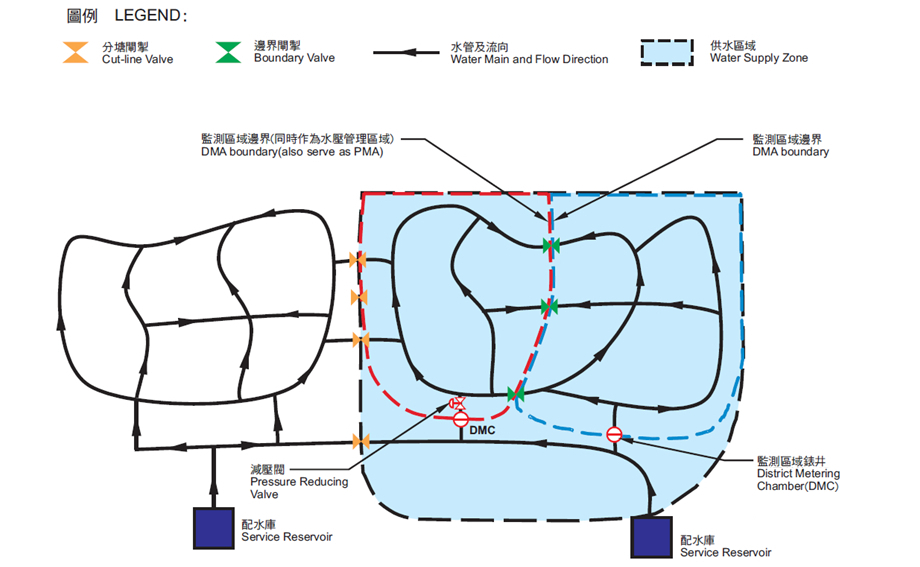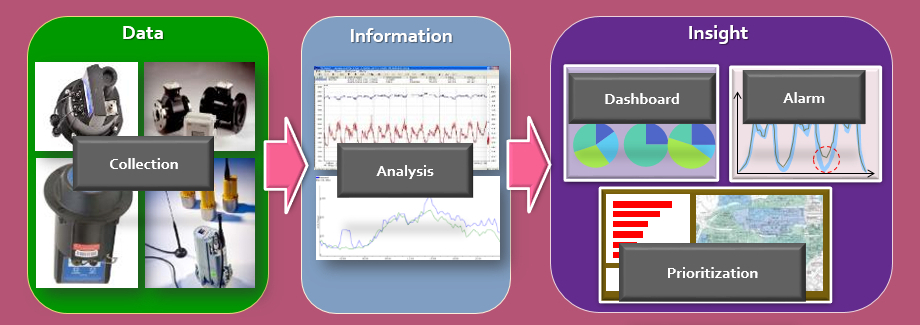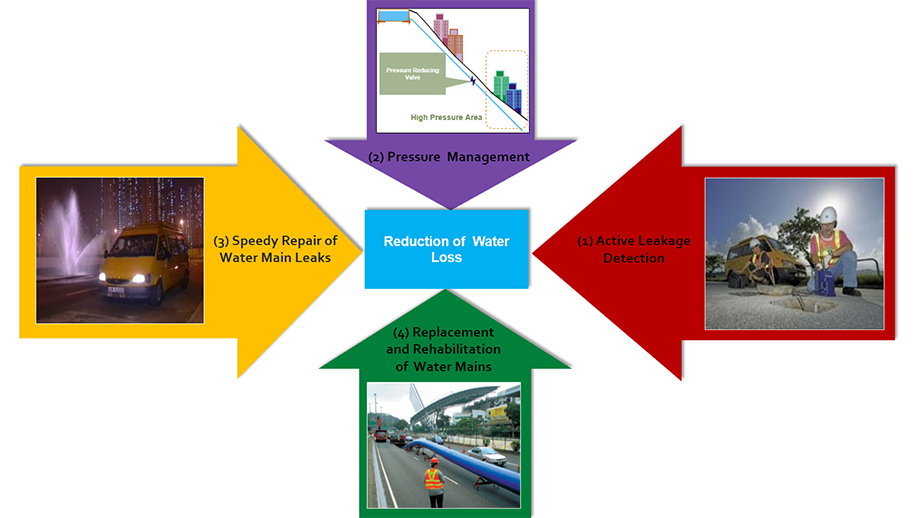
Figure 1
WSD is serving over 7 million populations with water supply through more than 8,400km water mains. Similar to most of the developed countries/places, water loss in the water distribution network of Hong Kong is a perennial problem. Factors such as high water supply pressure due to the hilly topography, congested urban setting and the large number of underground utilities services pose challenges to us for maintaining a highly reliable and sustainable water supply network.
In the 1990s, the condition of water distribution network became poor resulting from a considerable length of water mains approaching the end of their service life. In order to rejuvenate the water distribution network to arrest the rapidly rising trend of main bursting and leakage, replacement and rehabilitation (R&R) of aged water mains was the most effective solution. The R&R programme, covering about 3,000 km of aged water mains was therefore launched in 2000.
Following the substantial completion of the programme in 2015, the condition of the water distribution network has been largely improved. However, the water mains, especially for those not covered in the previous R&R programme, will continue to age and deteriorate. Given the much improved condition of the water distribution network at present, large-scale R&R works is no longer the only effective means to sustain the healthiness of the network. Riding on the technological advancement of sensors, telemetry, network management software and data analysis in recent years, we consider it an opportune time to implement the Water Intelligent Network (WIN) to maintain the healthiness of the water distribution network through analyzing the network condition and determining the most cost-effective means to maintain its healthiness. The leakage rate has been reduced from exceeding 25% in 2000 to 13.4% in 2024.
The concept of WIN is "Divide & Conquer" and continuous monitoring of network performance in a holistic manner. Under WIN, WSD have established about 2,400 discrete District Metering Areas (DMAs) and associated Pressure Management Areas (PMAs) of manageable size with monitoring and sensing equipment installed in each DMA and PMA network in the fresh water distribution network. A DMA is defined as a discrete area of a water distribution network established by the closure of the district boundary valve(s) or complete disconnection of water mains, with the quantity of water supplied to the area metered. Some of the DMAs also serve as PMAs where there is room for pressure management without affecting the minimum supply pressure to sustain normal supply. A schematic diagram of DMA and PMA is shown in Figure 1.

Figure 1
A tremendous amount of flow and pressure data as well as other associated network data are collected from the monitoring and sensing equipment in each DMA and PMA network. An intelligent network management computer system shown in Figure 2 is established for analyzing the data collected for continuous monitoring of the condition of the network.

Figure 2
Implementation of WIN enables problematic DMAs and PMAs to be prioritised for follow-up actions according to their degree of water loss with a view to maintaining the healthiness of the network. WIN also enables the effective execution of measures under the four pillars of network management in an integrated and coordinated manner. These four pillars shown in Figure 3 include -

Figure 3